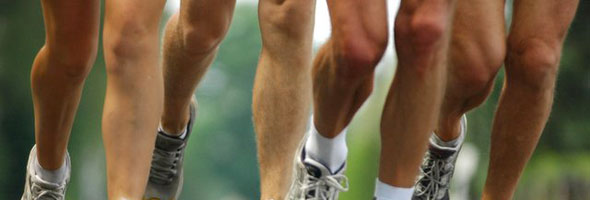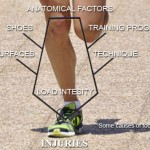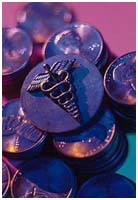9 handy tips to assist in injury prevention:
( 1 ) Avoid training when you are tired. Tired muscles provide inadequate support for tendons, ligaments, and bones, increasing the risk of strains, sprains, and stress fractures.
(2) Make sure that you increase your consumption of carbohydrate during periods of heavy training. Muscles which are low on carbohydrate are tired muscles, leading to the problem mentioned in recommendation No. 1. If you’re an endurance athlete, you need about 170 kilojoules of carbohydrate per kg of body weight during strenuous training.
(3) Continuing to build on the ‘fatigue produces injury’ theme, you should bear in mind that increases in training necessitate increases in resting, too. Anytime your training volume increases by more than 2-3 per cent, you need to make sure that you’re getting more sleep and taking more time to rest during the day. Otherwise, you’re not really training; you’re trying to tear yourself down.
(4) Remember a key principle of training: total training time doesn’t automatically build upon itself. If you’ve been training for three hours per week, for example, that does NOT mean that you’re ready to step up to three and one-half hours per week. Any increase in training should be preceded by an increase in strengthening so that your body is really ready to take on the new load. Runners, for example, should go through a strengthening period emphasizing drills to boost leg-muscle power before they attempt a significant upswing in mileage.
(5) Be especially careful if you’re a relative newcomer to your sport. If you’ve only been participating in it for a few months, you’re much more likely to be injured, compared to someone who’s been active for several years, simply because the latter individual has had more time to strengthen the appropriate muscles and connective tissues.
(6) Treat even seemingly minor injuries very carefully to prevent them from blowing up into big problems. Remember the time-honored acronym RICE-rest, ice, compression, and elevation–when a small injury strikes. Rest gives the afflicted area time to heal, ice reduces inflammation and swelling, and compression and elevation lessen swelling, promoting healing.
(7) Working with your doctor, take anti-inflammatory medications to control pain and reduce inflammation and swelling which occur as a result of your sports activity.
(8) If you experience pain during a workout, stop your training session immediately. A temporary loss in training time and fitness is far better than long-term damage to your body. Many athletes produce chronic deterioration of a knee joint or another anatomical region by insisting on training through pain. Remember that you’re in sport for the long run; a lost month of training to rehabilitate a damaged knee is much better than having to quit your sport completely sometime in the future because of joint degeneration.
(9) If you want to toughen your training without raising your risk of injury too much, another good strategy is to slightly raise your average training intensity (speed), instead of tacking on lots of additional volume (km) of running, cycling, swimming, or walking.
Article by the late Dave Spence
View the articles under the Injury and Treatment section:
- To reduce injury risk, you need to minimise impact
- Injury Treatment Approaches
- Leg & Foot Cramps
- Water Running
- The Gift of an Injury
- Injury prevention tips
- The best predictors of injury
- The Comeback from Injury

























[…] Injury prevention tips […]